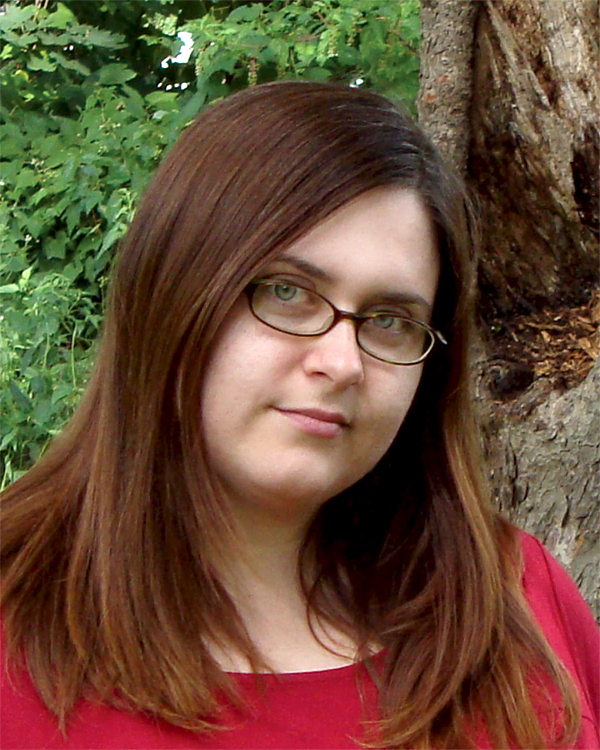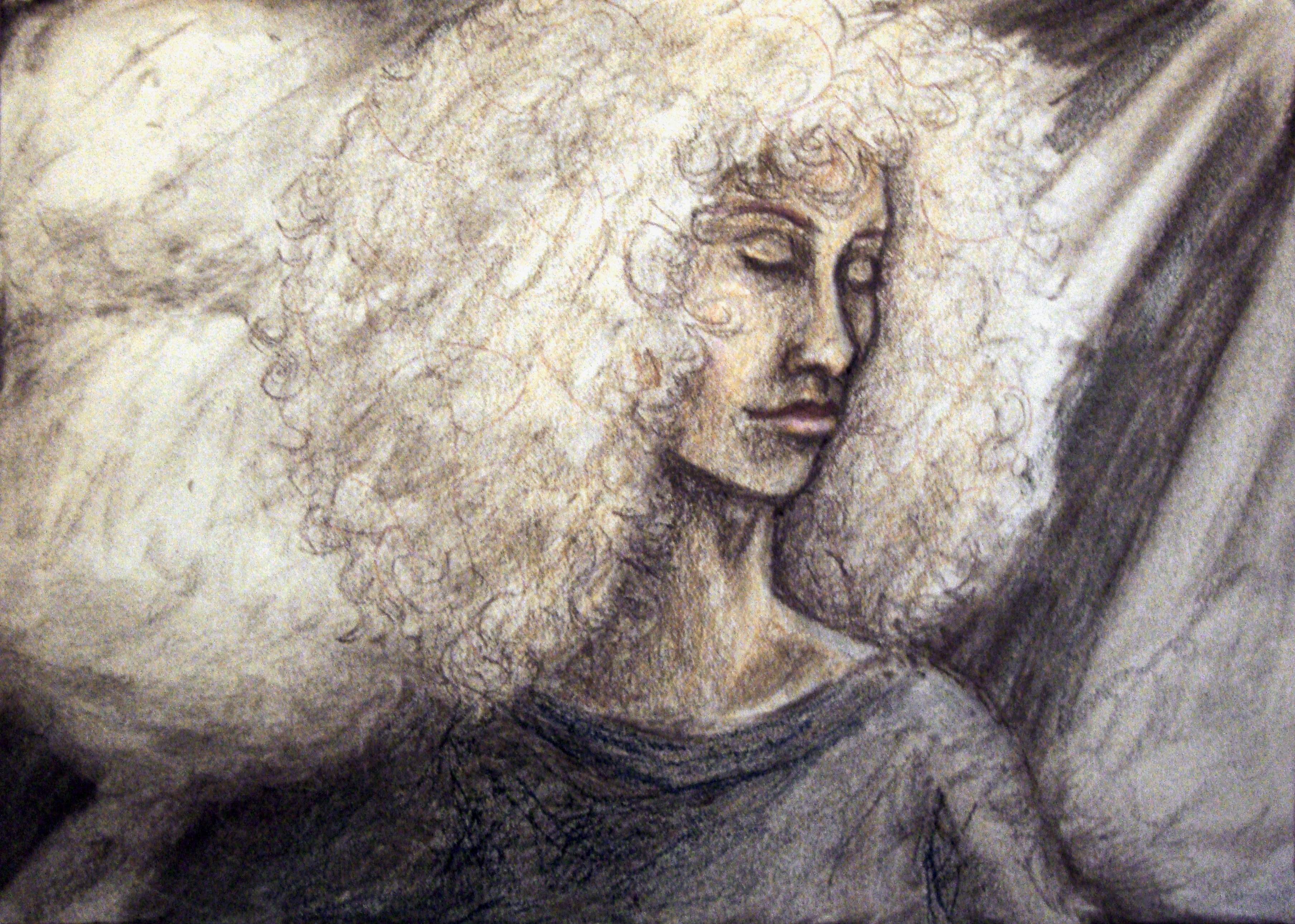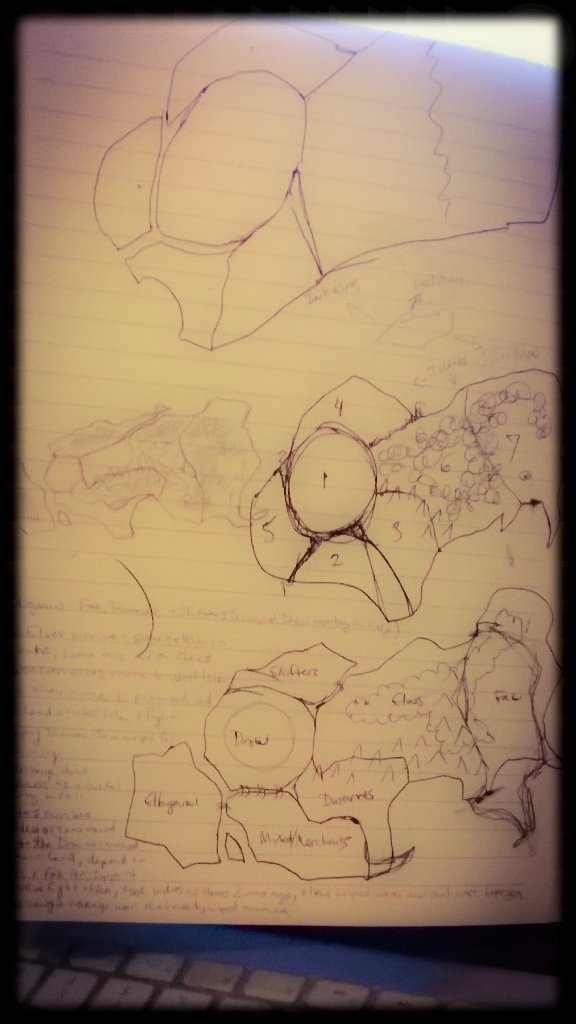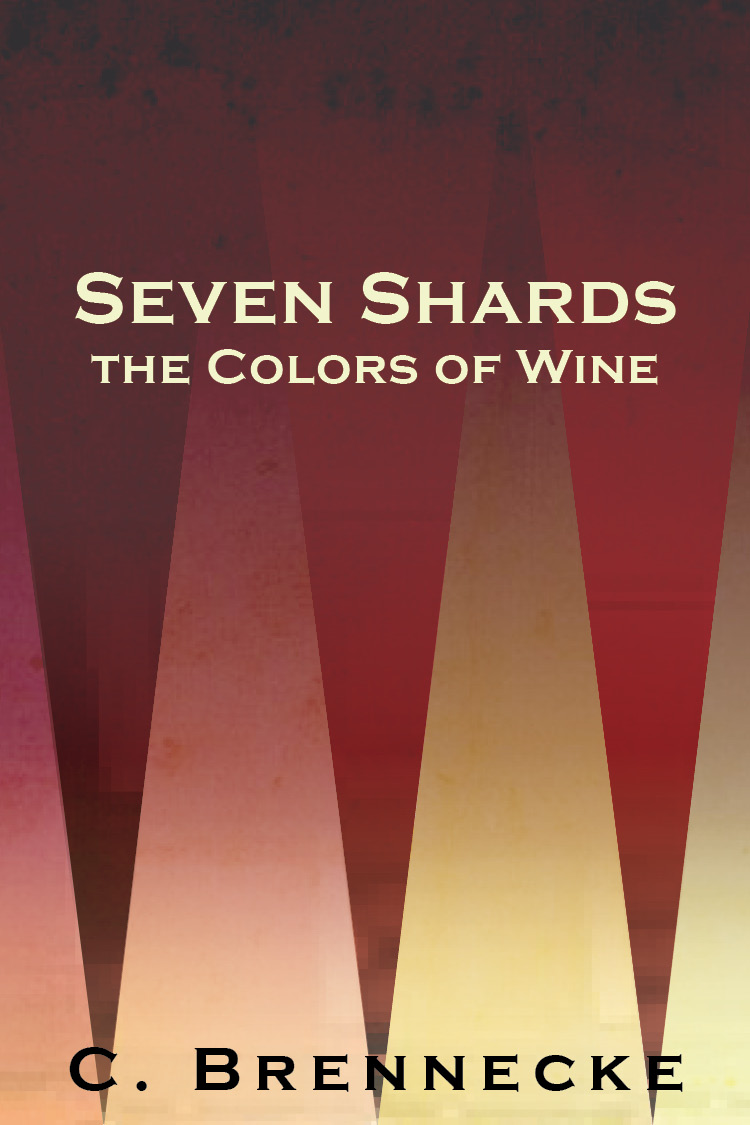Today, we enter the world of C. Brennecke, author of Seven Shards: The Colors of Wine.
 C. Brennecke is a writer, artist, and lifelong daydreamer. She works as a publications editor and organizes chaos for fun. She has always had a taste for character creation, but her first real venture into world-building came when she discovered tabletop roleplaying while studying art at Temple University, and she’s been creating worlds ever since. She spends many late nights on the computer in her suburban Philadelphia home, which she shares with her husband and a sheltie that thinks he’s a cat.
C. Brennecke is a writer, artist, and lifelong daydreamer. She works as a publications editor and organizes chaos for fun. She has always had a taste for character creation, but her first real venture into world-building came when she discovered tabletop roleplaying while studying art at Temple University, and she’s been creating worlds ever since. She spends many late nights on the computer in her suburban Philadelphia home, which she shares with her husband and a sheltie that thinks he’s a cat.
Now, prepare yourself to enter world of Rhydia!
Geography and Nature: the big picture
Overall geography: The story of Seven Shards: The Colors of Wine takes place on a single landmass surrounded by ocean. The land is topographically varied, but for the most part it is fertile and mild in climate. Six of the seven counties are on the mainland, which features a mountain range through the centre, farmland to the East, swampland to the North, and dry plains to the South. On the West coast is a plateau, which rises approximately 9,000ft above the sea level. A large river flows between the plateau and the mountains, and empties into a large bay on the South-West coast. The seventh county is on an island just off the western shore of the mainland. It is wooded and features cliffs along most of its coast.
Magic and how it is defined in your world:
Most of the magic in Rhydia is based on occurrences and practices from our own reality, only in Rhydia they are amplified to the point of being indisputable. For example, in our own world there are those that practice herbalism for its health benefits, those that wear perfume to attract a love interest, and those that look to the stars to better understand what is to come. But in our world, a large percentage of the population dismisses these things. In Rhydia, these practices are all proven and their possibilities extend even further. Potions, curses, simple illusions, precision prophesy; these are standard types of magic that anyone in Rhydia could set out to study and eventually master.
Beyond that is Old Magic, which has been lost and forgotten by the ages. However, during the course of this tale there are two individuals that discover and utilize one particular type of Old Magic. One comes into possession of an ancient text and devotes months of non-stop effort to mastering the ability. The other taps into it through a combination of instinct and adrenaline. And of course, both have a huge impact on their world.
Races and cultures: your world and its people
Races or dominant species:
 The races of Rhydia are all semi-human. According to lore (both remembered and forgotten), each of Rhydia’s counties descends from at least one fantastical species.
The races of Rhydia are all semi-human. According to lore (both remembered and forgotten), each of Rhydia’s counties descends from at least one fantastical species.
The oldest race of Rhydia is the Shaedesians, who were once an ancient dwarf like species called Earthfolk. Early in their history they were cursed to live a more human existence, making them more akin to half-dwarves. Their neighbors, the Naeniwans, are a hybrid of the Shaedesian race and the Fae. Most of them inherit their height from the Shaedesian side of their lineage and their build from the Faery side, but there are some exceptions, of course.
The people of the Capital descend primarily from Elemental Elves from the seas above Rhydia to the North. Many of the inhabitants of Handalbough descend from Elemental Elves as well, but are not “pure-bred” like those that live in the Capital. The Vaelish also descend from elves, but their forefathers came from the forested islands to the South.
The Nastranans and the Lygars are perhaps the two most mysterious peoples. The Nastranans are true mutts and I’m sure they would be a fascinating group for genealogists to research. Their bloodlines feature changelings, mermen, gnomes, elves, lizardfolk, and many more. Throughout the centuries, the more extreme traits became diluted, but to this day, each Nastranan has something “other” about them. None of them look quite right, yet none of them look much alike either.
The Lygars are rumored to descend from the Nastranans and the earliest occupants of their island, the wolves. But, the rumors aren’t entirely true. I’m keeping their exact origin story a secret for now.
Features of races or species that make your world different from our own:
Shaedesians: Extremely strong and hearty. Most have a keen sense of smell and a formidable temper.
Naeniwans: Each individual Naeniwan is gifted in some way unique to them. For some it’s a talent for music or art, while others have an ability to bond with animals or a near-effortless green thumb.
Rhydians: Most of the special traits of the Rhydians have been lost thanks to centuries of inbreeding. Now they are gifted only with keen eyesight, especially when it comes to seeing at night.
Vaelish: The Vaelish have excellent eyesight and phenomenal hearing as well. They are uncommonly graceful and most are highly intelligent too. As if that weren’t enough, they live a few decades longer than the other races as well.
Nastranana: There are far too many to list!
Lygars: All Lygars have silver eyes and pale hair, and possess a muscular build. They are naturally athletic and most have a passionate disposition. Some have a unique ability that ties in with the aforementioned secret I’m currently keeping. For now you’ll have to wait to find out what it is.
Politics and origin: how the world is knit together
How do different nations or territories interact? Are there outstanding disputes? If there is unity, how is it maintained?
These three questions are basically what the book is all about! Throughout the history of Rhydia, there have always been disputes and warring between the Rhydians and the Lygars. In recent centuries, the wars have become larger and more unbalanced. The second to last war resulted in the slavery of the Lygar prisoners of war. And the last war nearly wiped their species out altogether.
Where the story picks up, Rhydia is in a temporary state of peace. Slavery has been outlawed and the Lygars are so few in number that they are no longer perceived as a threat. But among their ranks a revolution is brewing. For a growing few, hope has been lost and revenge is their only remaining reason to carry on.
Outside of all this is the Star Reader, fully aware of what is to come and determined to control which factors she can. She manages to manipulate various characters across the nation, not for the purpose of avoiding the war, but rather to ensure that the war will result in a lasting peace. As we learn about her methods and true motivations, there comes a point when the reader is asked: When it comes to peace, does the end justify the means?
People and groups: social organization in your world
What are common attitudes and beliefs in your world?
The Capital: Capital is the most structured and regulated county. It has a set hierarchy, with the King and his house at the top, the other houses beneath that, servants living within the Citadel under that, and those that live outside of the Citadel at the bottom. They value power, loyalty, tradition, and the purity of their bloodlines, which they can trace back to their founder, a war-god named Magnus. In fact, those who cannot trace all of their ancestors back to Magnus are banished from living within the Citadel walls, unless they are living there as servants. As far as beliefs go, they’ve created a mythology out of their own forefathers. Interpret that as you will.
Handalbough: Although Handalbough concedes its governance to the Capital, it is culturally quite different. Its occupants are merchants, sailors, artisans, paupers, and conmen. Many of them hail at least partly from other lands, so their personal beliefs tend to vary. But as a whole, they value commerce by any means. Commerce and recreation. If there’s one thing that Handalbough is known for, it’s that it’s the county to visit when you’re looking for a good time.
Shaedesa: According to lore, the Shaedesians were once an immortal race, which was then cursed with mortality. Understandingly, they now pay little mind to the possibility of deities. As far as they’re concerned, if there are any gods or goddesses out there, it’s not likely that they care much about the fortune of Shaedesa. So, they concern themselves with useful things, like working hard to ensure their own prosperity. The pillars of their society are family and commerce. They are matriarchal and govern themselves at the town level, typically via tribunal.
Vaelion: The Vaelish value freedom, balance, community, and the pursuit of knowledge and self-betterment. They have a unique take on marriage, and raise their children communally. Throughout the lifespan of an individual Vaelish, they are given several naming ceremonies to reflect their achievements through their titles. Each Vaelish city are ran by a committee, and the Lord and Lady of Vaelion, which are elected positions, oversee countrywide concerns. They acknowledge the spirits of nature, as well as the goddess that is worshipped by the priestesses of Naeniwa.
Naeniwa: The Naeniwan values are life, creation, peace, equality, and purpose. They believe that each person has a greater purpose, or a role to play, and that they each must pursue that end. Every child is expected to leave their home town before entering adulthood so that they can discover the path that is meant for them without the influence of obligation. Naeniwans rarely get involved in political affairs, but when they do they leave the leadership to their High Priestess. During times of war, Druid leaders may also be involved with decision-making. But, such leadership is rarely needed, as the majority of Naeniwa is farmlands, and they truly are a peace-loving people.
Lykoslund: The values of the Lygars have changed over time, reflecting the many wars that have plagued them. They have always valued nature and strength, though those two things were interpreted in very different ways at various points. In recent centuries, the Lygars had become so war-hungry that they assign leadership not to their oldest and wisest, but instead to their oldest able-bodied male. Until recently that meant that the oldest male would be challenged to combat by the next in line, with the strongest male often emerging only after a series of fatal fights.
Nastrana: Nastrana is a true laissez-faire society. They value independence, equality, and the wildness of nature. Like the Vaelion, they give respect to the nature spirits, and they share a reverence for animals with the Druids. Although typically like-minded, they are so unregulated and without structure that it is rare for them to come together as a people in support of anything.
Want to know more about C. Brennecke’s world? Why not enter it by pre-ordering a copy of her book, Seven Shards: The Colors of Wine.
The final revolution is coming. She could stop it…but should she? As the momentum of impending revolution spreads, the mysterious Star Reader gives a strange instruction to the leaders of a neighboring county. As plans are made and old secrets discovered, the moment of no return arrives with the unexpected death of the King.
Chaos unfolds and the Star Reader’s schemes buy just enough time for new heroes to emerge, helped along by magic’s long lost. Once all is said and done, the sacrifices of war must be weighed against their results.
Excerpt:
“What is this place?” Vaughn’s eyes grew wide, a look of horror coming over his face. Beside him, even Vannora had fallen silent.
The land before them was barren; the soil dull, the plantlife low and wilted, and the scent of charcoal hung in the air. Large, blackened stumps and long-fallen trunks stretched out as far as their eyes could see.
“This place was once known as the Silver Forest, but now we call it the Firelands,” Kamaria answered through a tight jaw. She cast her eyes down and turned away. “It was once home to hundreds of our people. Now it is home to none. This is where they came to burn us. To snuff us out.”
“I was here when it happened.” Alphonse’s voice hung low, like a whisper. “They came at night. My village was here then. My family. My friends. They fought bravely, each of them. My mother, my father, my brother, even my grandmother; they all tried their best to kill the flames. But you cannot fight a fire, can you? I watched, stunned, for a while. Then, after realizing the futility of their efforts, I fled.”
A sniffle escaped from Vannora. “I never knew.”
“Of course you didn’t,” Kamaria snapped, turning to face the teary-eyed woman. “I don’t imagine the Rhydian’s boasted about this victory. I don’t imagine they saw it as a victory at all, in fact. They were trying to set the whole island aflame. In their eyes it was a failed mission.” She spat on the ground with a sneer, clearly finished with the conversation.
“How did you stop it?” said Vannora.
“We didn’t. The rain did.” Alphonse looked up to the sky, his eyes welling up. “The gods may not have blessed our people outright, but they did protect us from annihilation. For that, I’ll be forever grateful.”
Kamaria began walking ahead of the group. “We must continue.” She commanded them without so much as glancing back. “There’s a spring an hour West of here. That’s where we’ll set up camp for the night.”
Buy the book!
EBOOK: Inkshares
PRINT BOOK: Inkshares
Connect with C. Brennecke in the following places!
Website: Myths Mists & Musings
Twitter: @bonebonetweets



